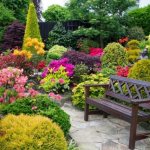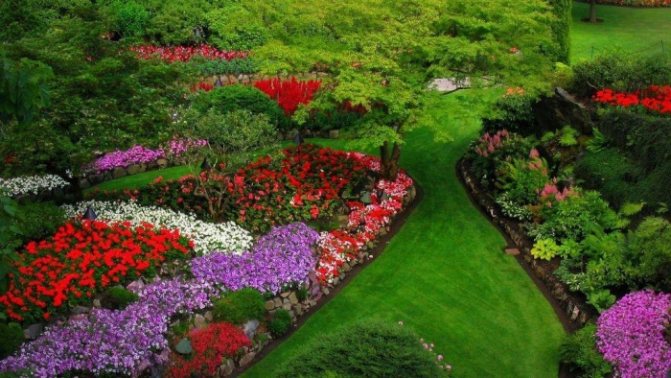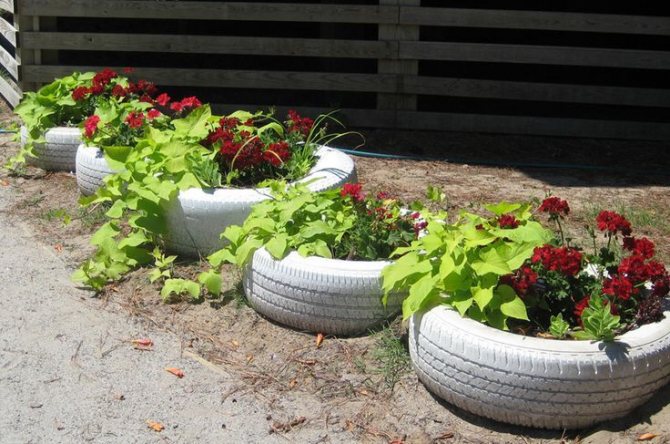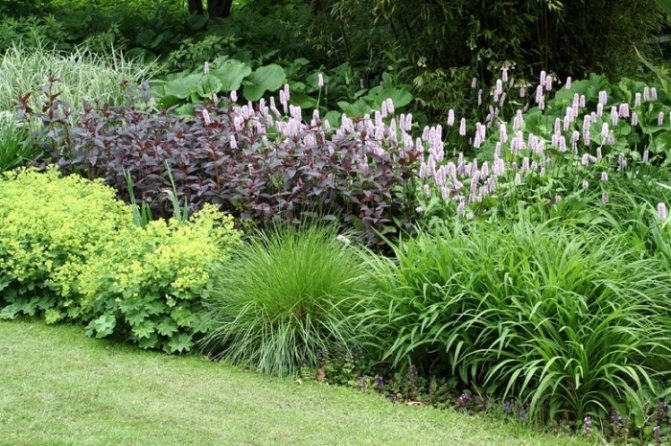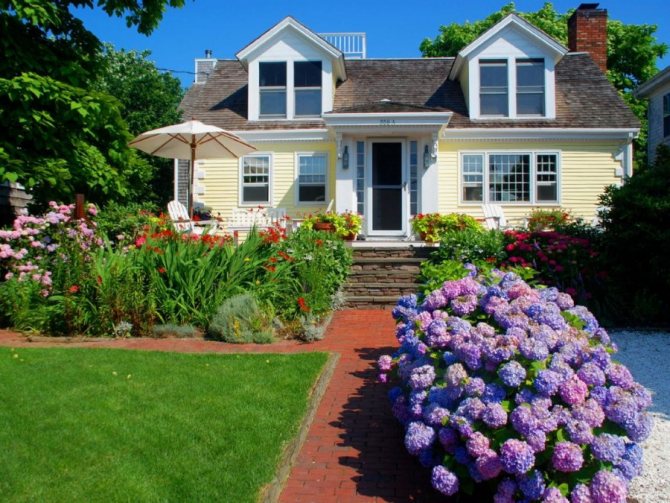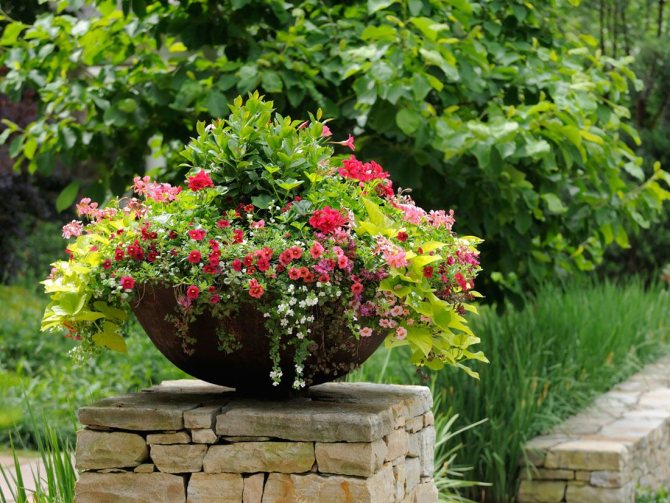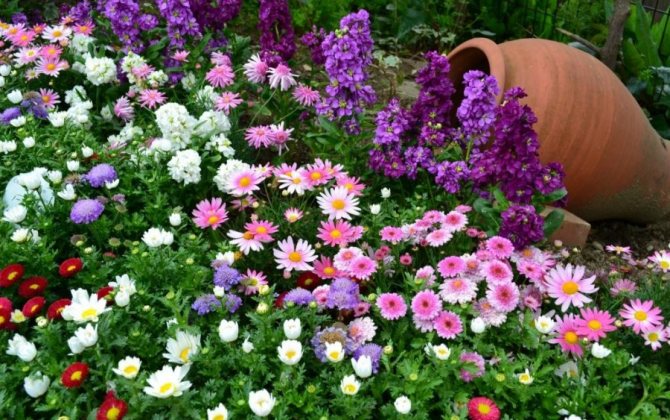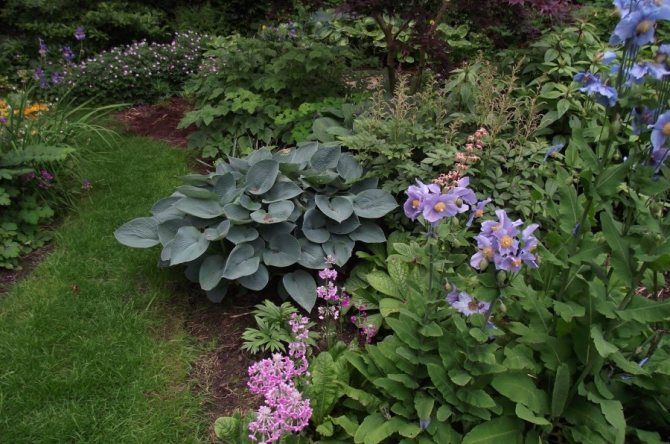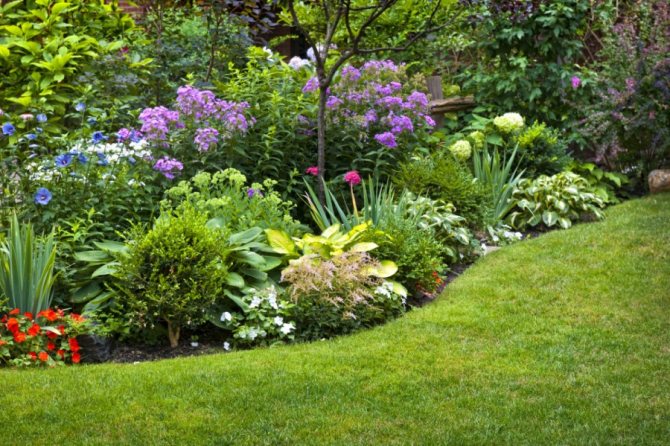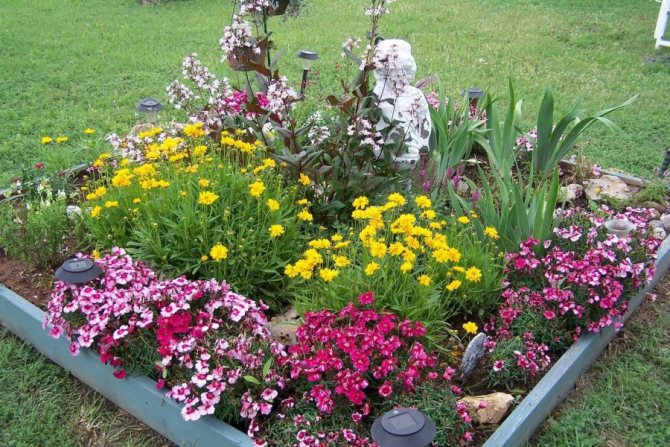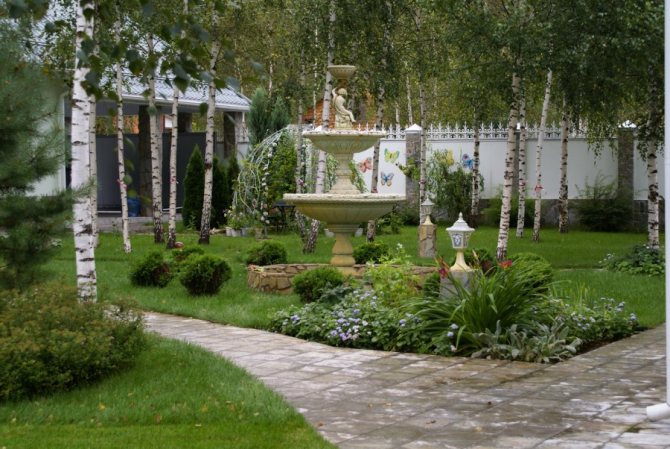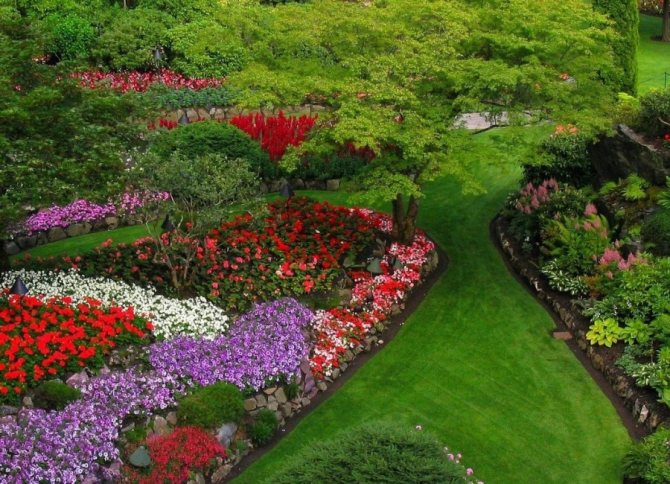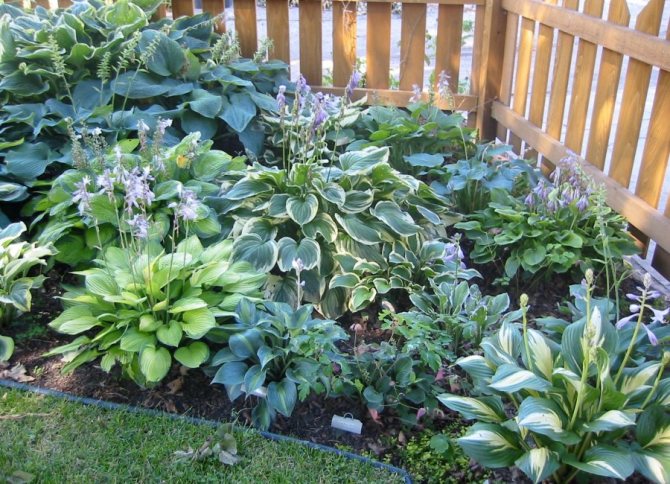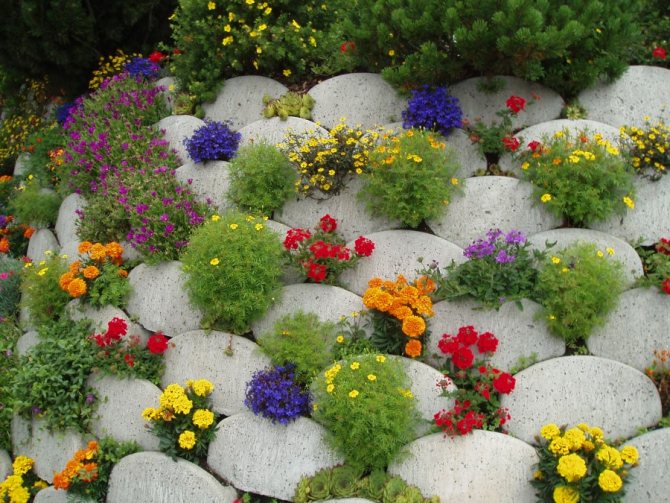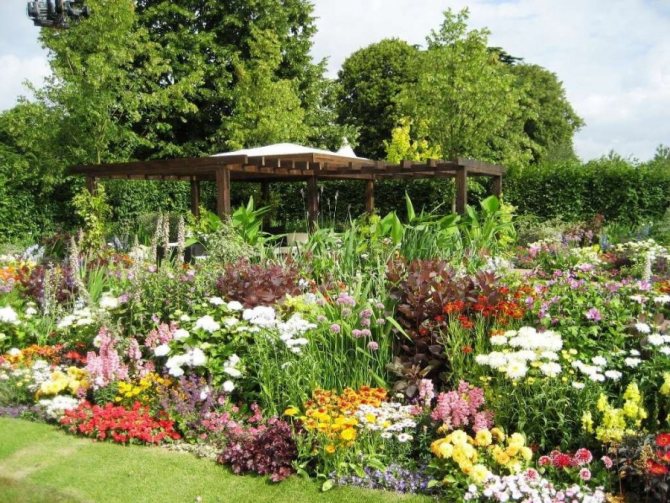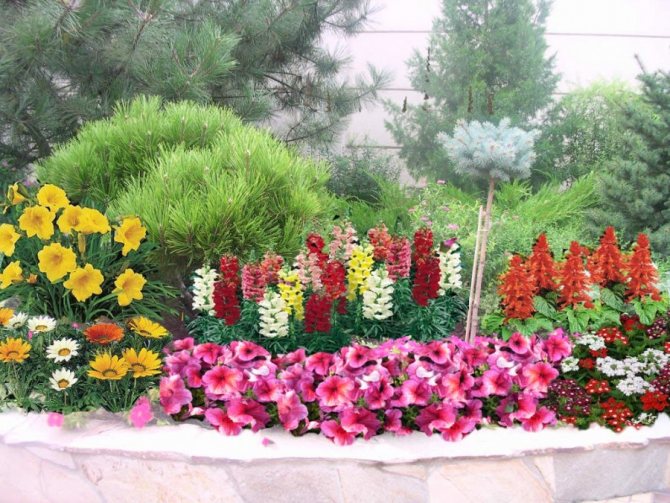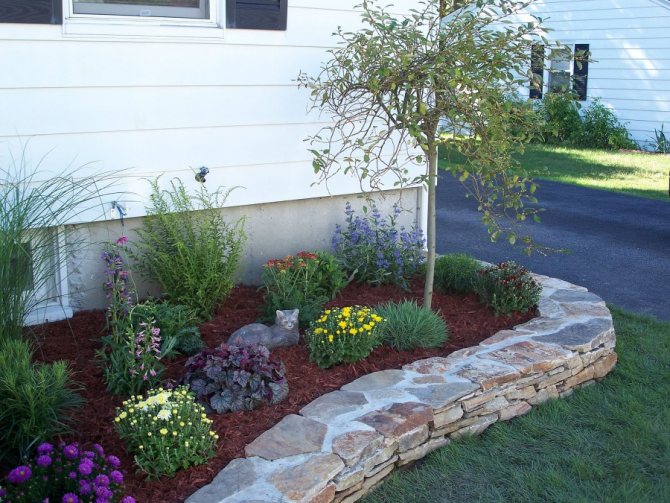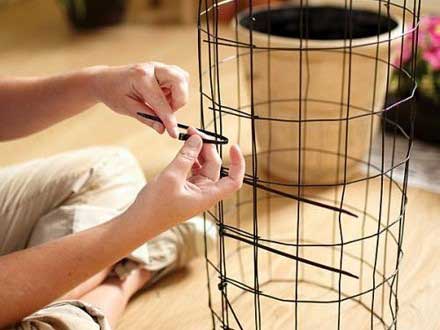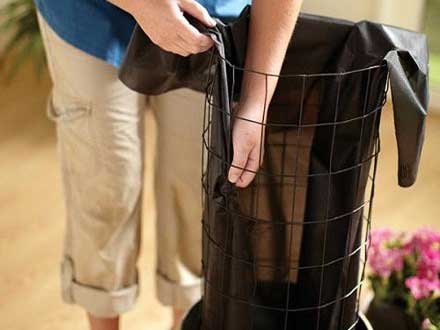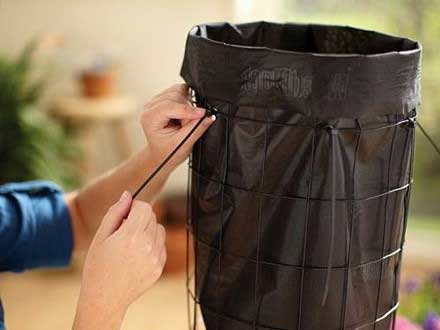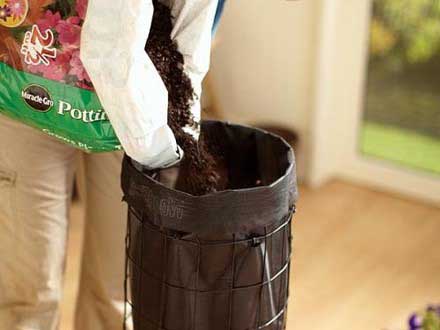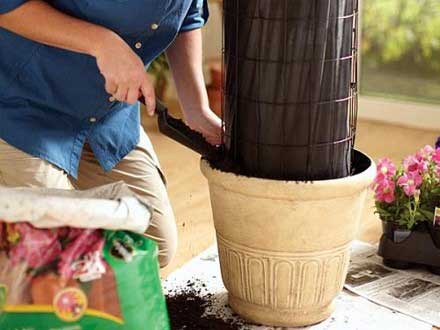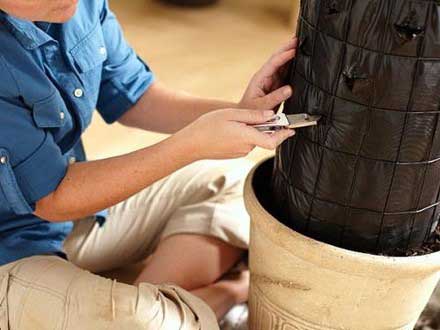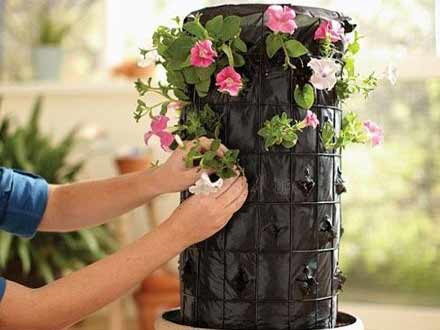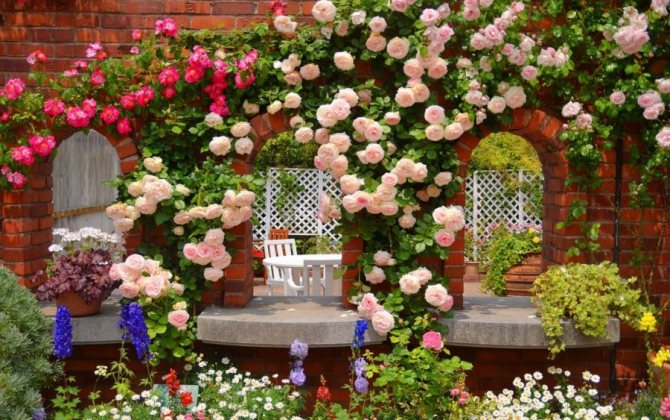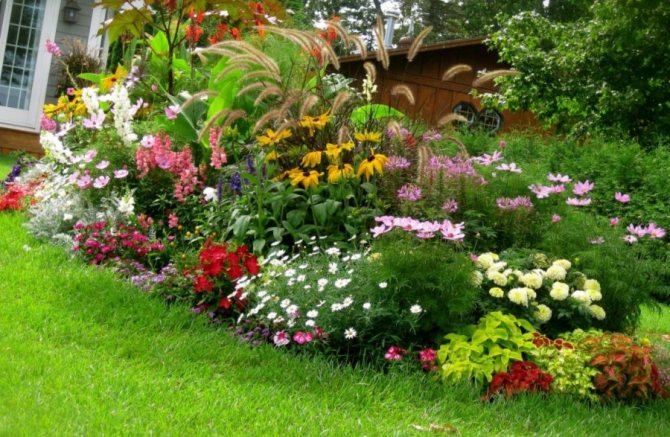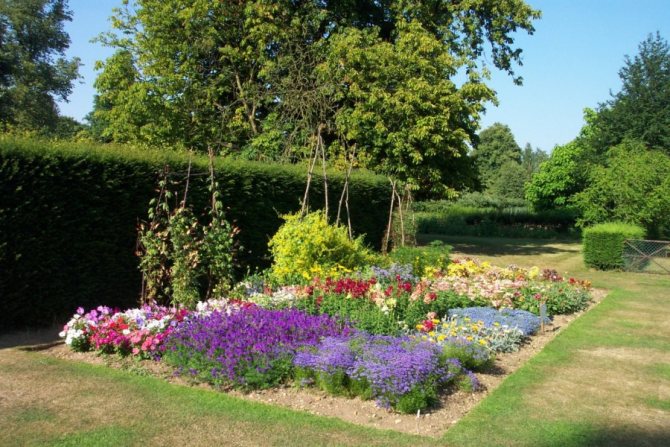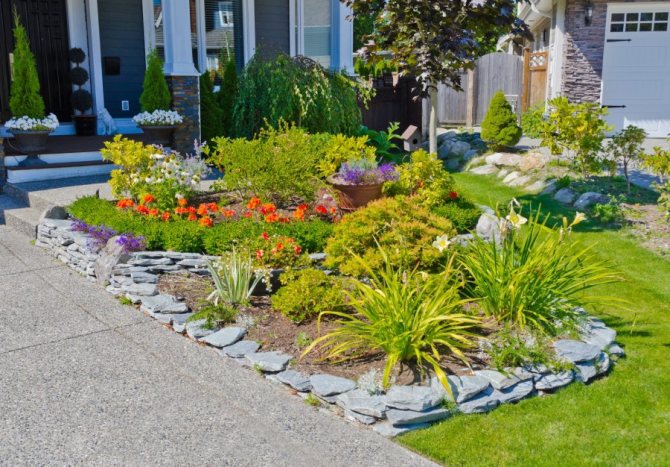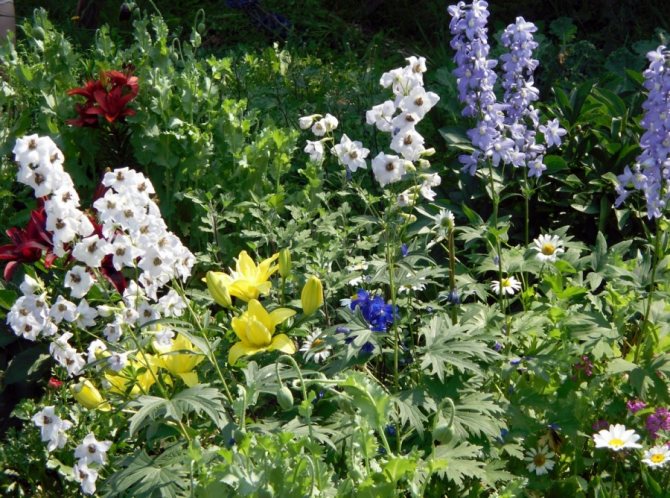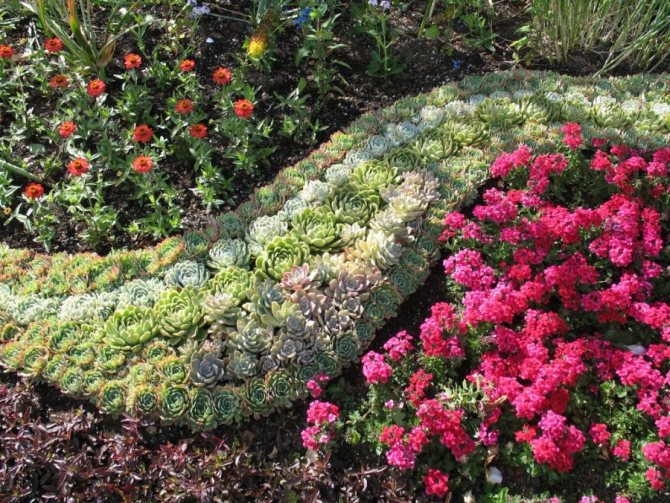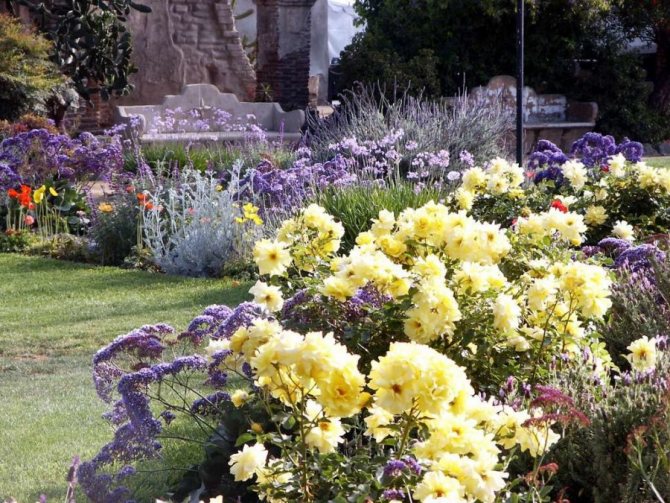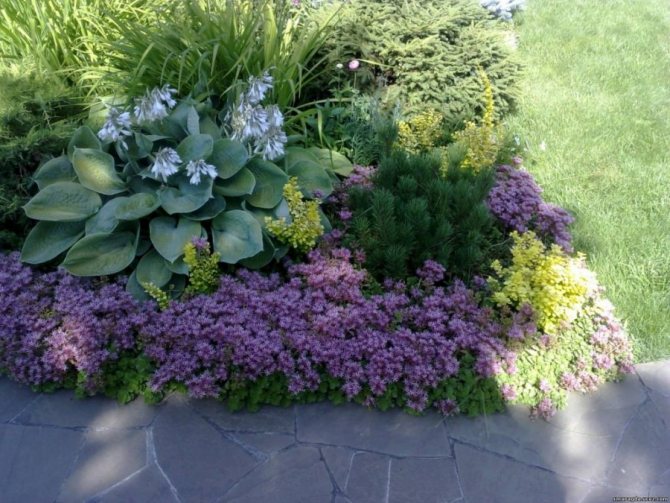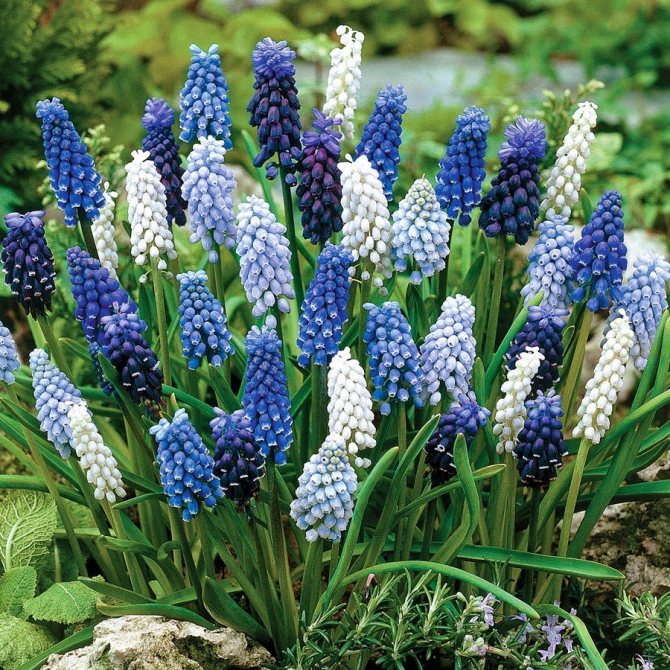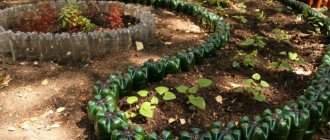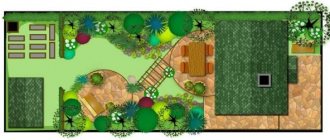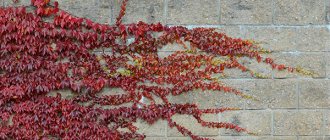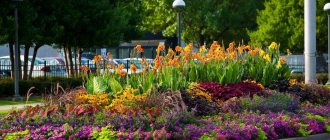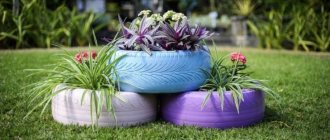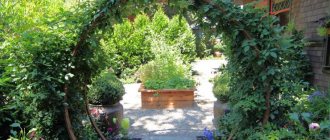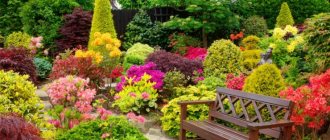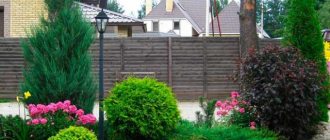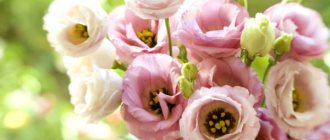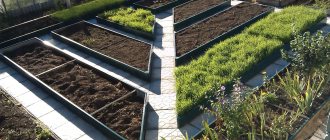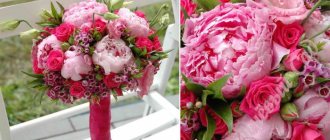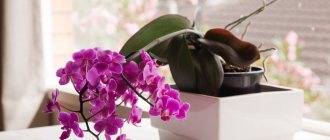What gardener does not dream of decorating his plot with flowers, and even so that they please the eye all season. Usually, in order to make a flower bed of perennials, a lot of planting material is purchased, fortunately, there is plenty of it on sale now.
But not always and not everyone is lucky in this matter, because in order to get a beautiful flower bed of perennials, you need to study some simple rules.
Preparation
Why exactly perennials? The advantage of these crops is that you do not need to sow and plant again every year (and this is a lot of work), again think about the design, not knowing exactly what will turn out in the end. You can plant a flower bed of perennials once, having thought everything out well, and it will delight and amuse for many years, requiring only simple care.
Before you start creating compositions from perennials, you should decide on the locations of their placement. It is better to do this first on paper, drawing a plan of the site, dividing it into zones.
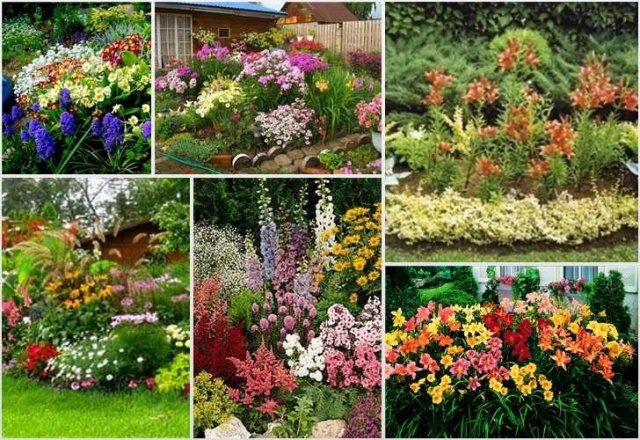
A flower garden is an element of decoration, of course, that it does not need to be arranged in poorly viewed places. Beds of flowers of different heights are able to hide from prying eyes what the gardener would not like to put on public display at all, and flower beds of low-growing plants will help to successfully arrange the paths of the garden.
Having decided on the shape and size of the flower beds, you should think about how to fill them and how it will look. On a paper plan, you need to color the schemes of flower beds from perennials, you can make several options. This is a mandatory procedure, otherwise it is impossible to imagine how everything will look like in reality. The desired color of the center of the flower beds, their main area and contours is selected.
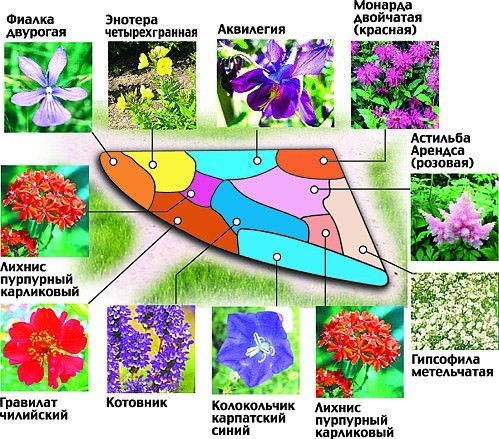

Preparation for planting perennial beds includes the selection and purchase of planting material. Each plant is adorned with flowers for an average of two to three weeks, so many plant species are needed for continuous flowering.
Advice! Write down the flowering dates of different plants on a piece of paper and draw up a diagram based on them.
Master Class. Do-it-yourself vertical flower bed
Vertical flower beds have become increasingly popular in recent years. Consider a small step-by-step instruction for making such a flower bed using multi-colored flowers. The best option for composition is, of course, petunias.
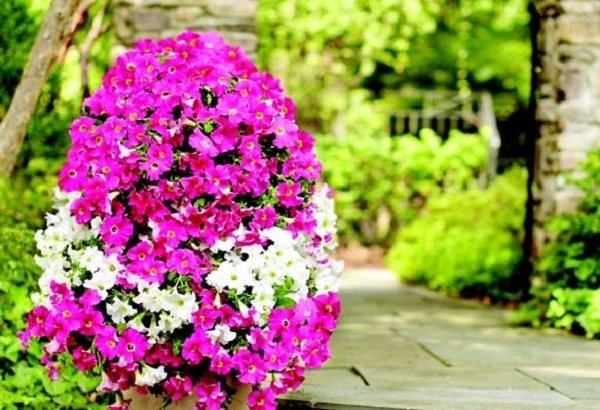

Vertical flower bed from a pot
For work, you will need the following consumables:
- wire mesh;
- seedlings of flowers;
- plastic ties;
- soil mixture for flowering crops;
- large flower pot;
- strong cellophane.
After preparing everything you need, get to work. For the convenience of visitors, the information is given in the form of a table.
Table No1. Instructions for creating a vertical garden flower bed.
| Steps, photo | Description of actions |
Step one | Take a wire mesh and make a cylinder out of it to serve as a vertical base. Use plastic ties to secure the edges of the mesh. Place the resulting cylinder in the flower pot. |
Step two | Take strong cellophane and wrap wire mesh with it. |
Step three | Using the same plastic ties, secure the edges of the film to the vertical base. |
Step four | Fill the resulting form with a pre-prepared soil mixture for flowering crops. |
Step five | Also cover the pot with soil (this will make the wire mesh more stable). |
Step six | Cut holes in the foil for planting flowers. Be sure to do this in a checkerboard pattern. |
Step seven | Plant flowers in the holes, then water gently. |
Step eight | Plant a few more plants on top (also watering them after that) to make the composition look complete. |
Step nine | Water the finished vertical flower bed regularly, apply fertilizers in a timely manner. In this case, it will look the same as in the photo (or even better!). |
Wire mesh prices
wire mesh
Varieties of flower beds
Flower beds of various shapes and sizes, inscribed in specific conditions, and the corresponding functions of each specific zone will look harmonious. There is room for imagination here, the irregular or asymmetrical shape of the flower beds is not only not prohibited, but also welcome. But if the gardener does not yet feel confident, you can limit yourself to the classic forms:
- mixborders are most often rectangles, or irregularly shaped beds located near the walls of houses, paths or fences;
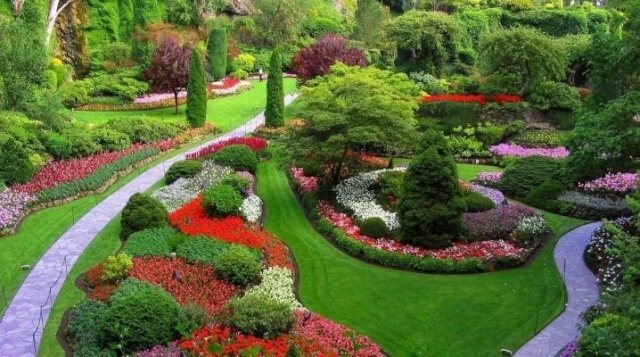

- borders - narrow perennial flower beds, bordering large flower beds of various configurations;
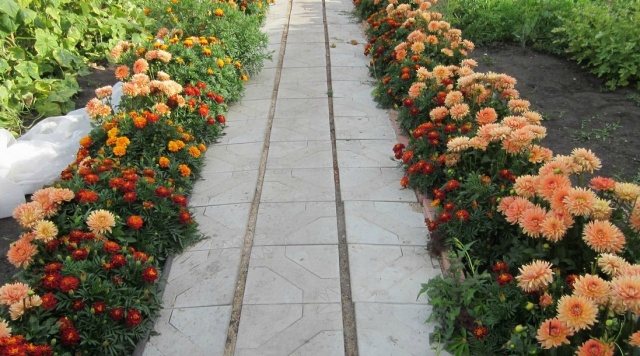

- round compositions of perennials.
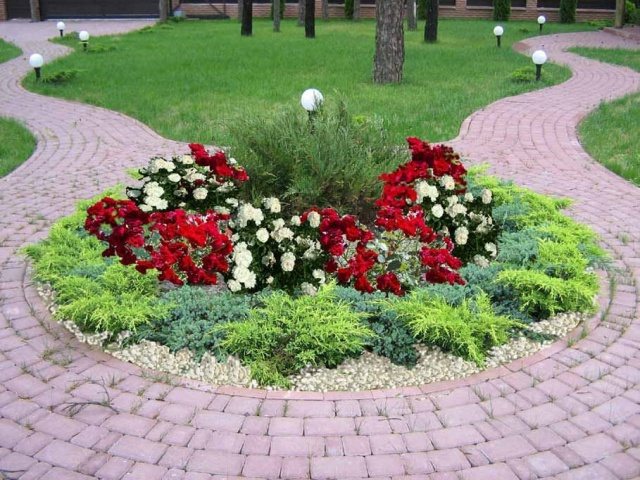

Various patterns of perennial beds with a description of flowers are a great tip for those who want to decorate their garden or homestead. Here are some options for continuous flowering perennial beds:
- Ostrovnaya. This flower garden resembles an island outlined by smooth lines. Such flower beds are decorated with perennials of different heights.
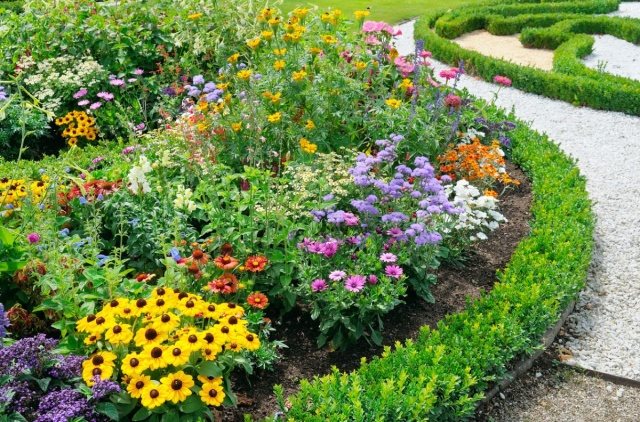

- Carpet flower bed. Its very name suggests that this is a flower bed of stunted perennials. These can be flowers of the same type, or different, as long as they do not differ from each other in height.
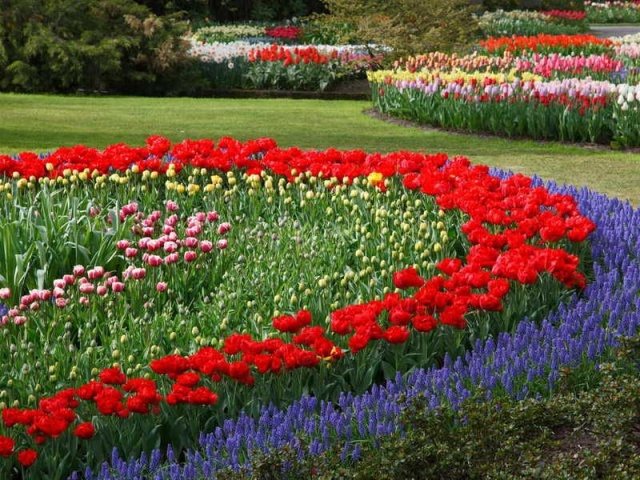

- Curb. There is no better way to bring perennials to life than a curb bed along the paths.
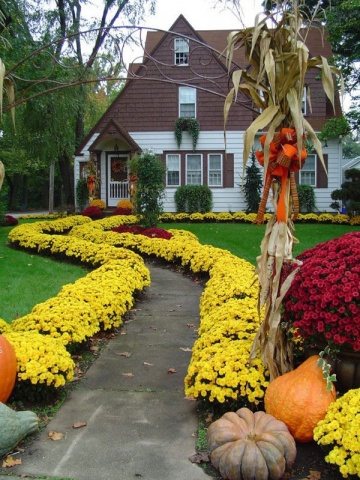

It is suitable for any home or summer cottage.
What is a mixborder
Mixborder is a complex word for a very simple concept. This name has the following designation: this is how a flower garden of several plants is called, which are combined according to certain rules. In English it literally means "to mix the border". This is a complex flower bed, which is made especially difficult.
Mixborder contains:
- Annuals;
- Perennials;
- Shrubs;
- Herbs;
- Trees.
And not only the color scale is important, but also the size of flowers, species forms, flowering periods.
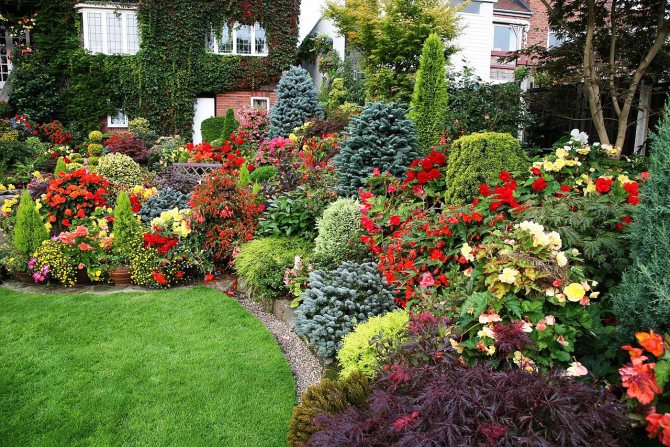

A complex flower bed is most often placed along the paths, in the middle of the lawn, and also on the outer border of the site. A very important point: the boundaries of the mixborder must be clear. And to do this, wood, natural brick, and also stone are used.
Planting a flower bed
The place where the flower garden will be laid out is cleared of stones, debris and dead wood. When digging up the earth, all the roots of the weeds are carefully removed, but what about the larvae of beetles and other pests. If a lot of weeds grew in this place, then it is better to remove the topsoil. It happens that it is necessary to improve the quality of the soil. For clay soil, the introduction of peat, humus and sand is suitable, and on a sandy soil, on the contrary, the addition of a clay component. If water stagnation is possible, then drainage is made from sand, crushed stone or broken brick. For digging, a fertilizer mixture of organic matter and minerals is introduced.
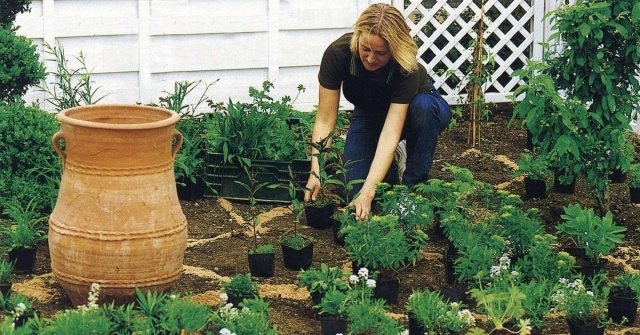

The scheme of planting a flower bed of perennials involves the determination of planting sites for tall and low-growing plants.For example, if the flower bed is round or oval, then tall flowers are planted in the center, medium-sized plants are planted around them, and low-growing plants are planted around the perimeter. If it is a rectangular mixborder adjacent to a wall or fence, then tall plants are planted in the background.
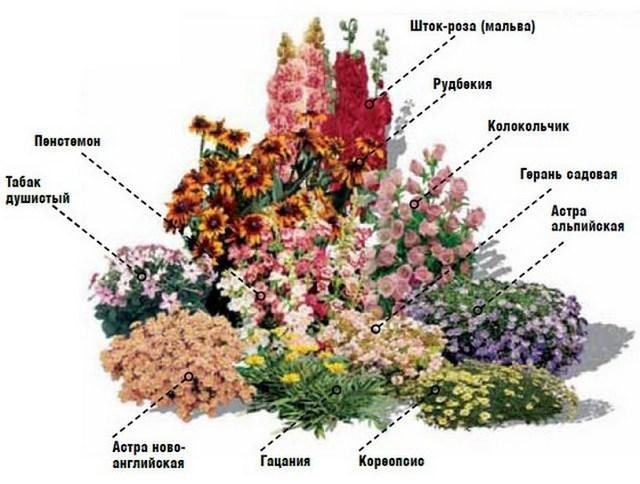

Some flowers are very beautiful during flowering, but can ruin the look when they fade. These plants should be planted alongside other lush flowering plants that can cover those that have “faded long ago”.
The location of the flower garden is round
As a rule, round flower beds are located in front of the house, near the main entrance. Such a flower garden next to the lawn looks most advantageous. It is against the green background that the colors of flowers play especially brightly, the whole view of the garden becomes elegant, festive.
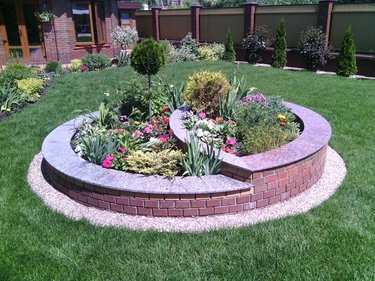

However, you should choose a place for such a flower garden, adhering to the design of existing buildings and plantings. The flower bed should complement or even complete the overall view of the entire panorama, but not destroy it.
It is important that:
- Landings did not interfere with the passage of people.
- The flower garden was clearly visible.
- The plants had enough light.
The size of the flower bed is based on the size of the space in front of the house. If there is not enough space, it is absurd to "push" there a huge flower bed that will occupy the entire area. If there is too much space, then the small flower bed will simply be lost. This does not mean at all that a hefty flower garden should be erected on a large perimeter. Such a solution would be too boring. It is much more interesting, for example, to place a round flower garden in the middle of square or triangular plantings. In any case, fantasy combined with taste is always welcome.
How to plant a flower garden of roses and perennial crops
A flower bed with roses and perennials will certainly become the main decoration of any garden. It should be placed in the most visible place, where there will be enough sunlight and there will be no drafts.
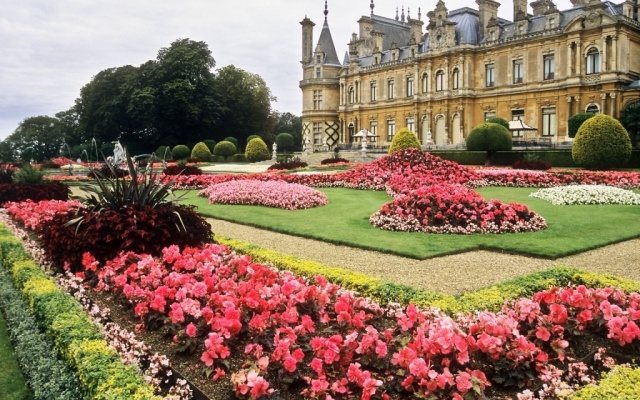

The soil for a flower garden with roses should be well fertilized and have a weak acidity, the water should not stagnate there, in case of the likelihood of moisture stagnation, it is necessary to build drainage. If, in the place where the flower bed with roses will be located, there is a close occurrence of groundwater, then it is necessary to raise the soil level with bulk earth. To prevent the earth from crumbling, you will have to fold a small wall around the perimeter.
By combining roses of various heights and bush shapes with flowering perennial crops and lawn grasses, you can create a flowerbed in the style of a Moorish lawn.
Mixed beds of roses and perennials look great in the form of a mixborder. It can be one-sided, such as against a fence or building wall, or two-sided, when located between two paths.
If the mixborder is facing the viewer with one side, then tall rose bushes are placed away from the viewer, the most beautiful and winning flowers of medium height are planted in the middle, and mini-roses or ground cover plant species are in the foreground. In double-sided mixborders, tall bushes are planted in the middle line, and medium and then low-growing plants are planted on either side of them.
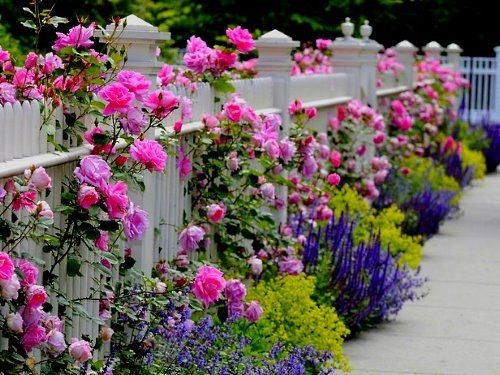

It is also possible to form flower beds from perennials and roses in the form of a border. In this case, floribunda and ground cover roses are used, which can be combined with non-flowering perennial plants that have beautiful foliage.
Remember! Roses do not tolerate loneliness, try to plant several bushes of each variety.
In flower beds with roses, you should not use many other flowers that can divert attention from the "queen". The rest of the neighbors can only serve as a decent background.
Perennial varieties
Perennials, in contrast to annuals, are able to take their place in the country flower bed for several years.With the arrival of cold weather, only the upper part of the plant withers, and the rhizomes and tubers remain in the ground for a period that often exceeds a decade.
In addition to their long lifespan, they differ in a number of other advantages:
- A wide range of varieties and types (more than 300 thousand);
- Unpretentious growth, not requiring much attention;
- Long flowering period;
- Frost resistance;
- Maintaining excellent decorative qualities throughout the entire cycle;
- The ability to reproduce through rhizomes, shoots and seeds, allowing transplanting flowers, breaking new flower beds without additional investment;
- Inclusion in the group of medicinal plants, which makes it possible to grow a personal pharmacy.
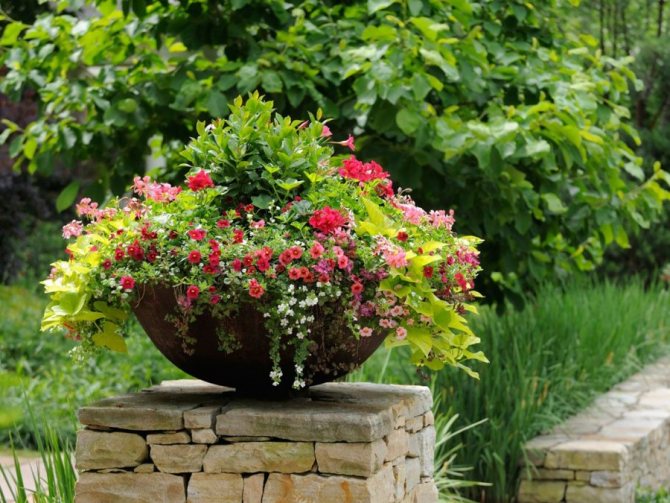

Selection of plants
Another answer to the question of how to arrange a flower bed of perennials is the correct selection of plants. It is necessary to take into account their breeding method, as well as the timing of planting. It should also be remembered whether this will be a flower bed of low-growing perennials, or uneven ones.
If it is a flower garden of flowers of different heights, then the ratio in terms of quantity should be as follows:
- ground cover flowers - ten roots;
- seven plants with low growth;
- five medium-sized;
- no more than three tall.
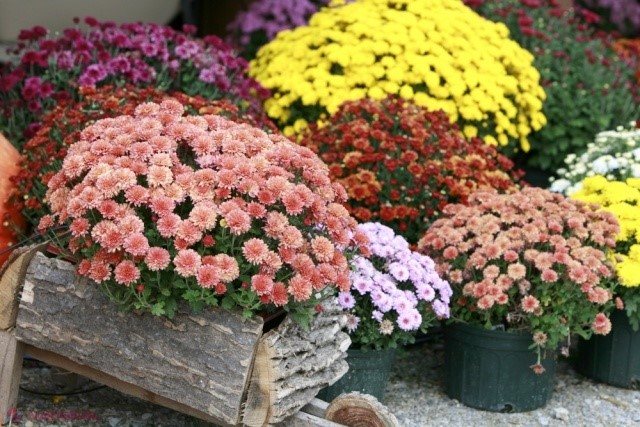

To decorate flower beds with perennials, it is important to know the flowering time of each flower, because already faded buds do not decorate a flower bed. Those who want to have a constantly blooming perennial flower bed should take care of purchasing primroses such as primroses, daisies, viola. You cannot do without bulbous primroses - crocuses, hyacinths, early tulips and daffodils. The list of summer perennials is much more extensive, we name only a few of them - lilies, peonies, roses, rudbeckia.
And, of course, we must not forget about autumn flowers, such as perennial asters and chrysanthemums.
Basic principles of landscape design of the local area
In order to understand how to arrange flower beds near the house, you need to understand the basics of landscape design. Landscaping is the art of organizing space using natural elements - plants, stones, trees. This direction is subject to the basic artistic principles of harmony.
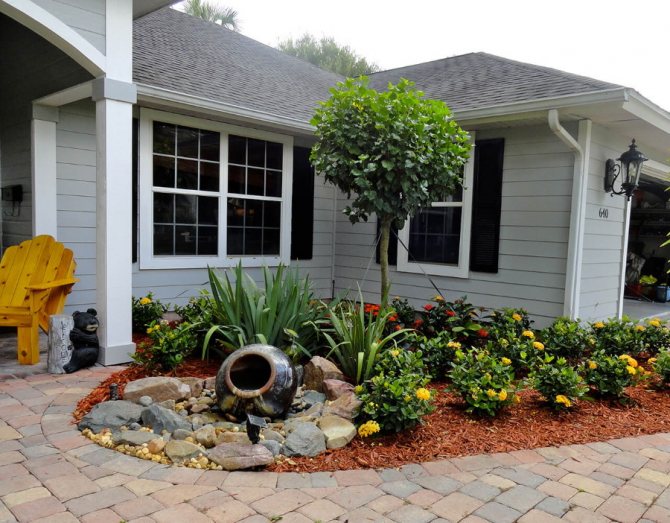

The choice of plants for the flower garden in front of the house must be done taking into account the climatic conditions and the characteristics of the soil
Harmony principles:
- Integrity.
- Balance.
- The proportionality of forms.
- A color scheme.
Integrity implies the unity of all elements on the site. All of them should be performed in the same style and create a single composition. These can be the same elements in different parts of the site or the unity of color in decorative compositions. To achieve integrity, you need to immediately choose the style of the landscape and create a general plan. This is especially important for the entrance group, that is, elements placed in front of the house. Since this part of the space creates a general impression.
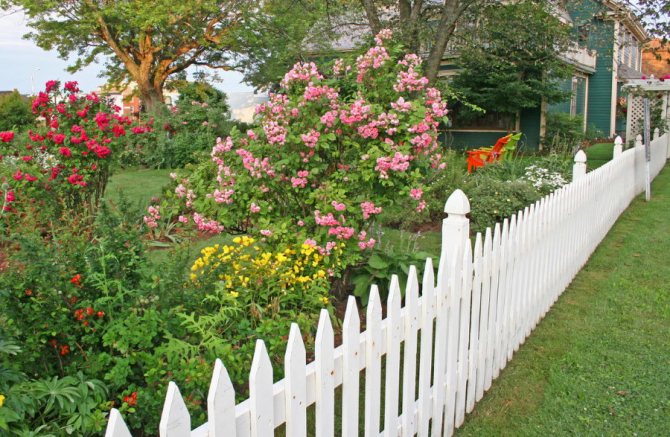

Roses, Japanese quince, chokeberry or hazel are planted in a sunny place. From herbaceous plants in the sun, bells, daisies and marigolds grow well
Balance involves placing elements evenly in a composition. In a flower garden in front of the house, these can be patterns of flowers, borders along the edges of the flower bed and paths. The balance can be symmetrical or asymmetrical:
- Symmetrical balance involves repeating shapes in a mirror image about a centerline or point. Such a center can be a house, a central path, a flower bed in front of the house.
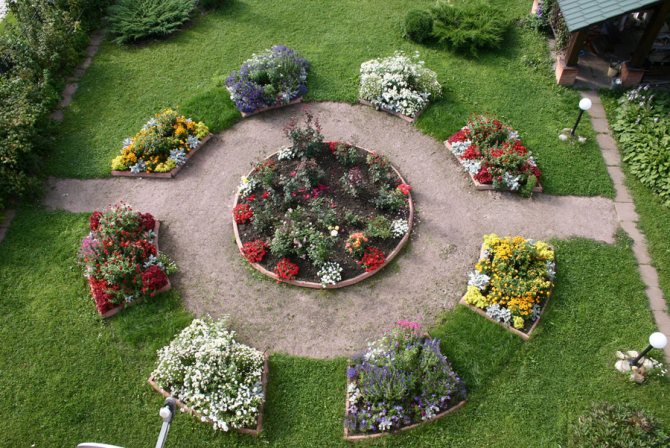

The path from the gate to the porch of the house is often chosen as the center line of the composition. - Asymmetric balance results from the chaotic arrangement of elements, which at the same time maintain a single structure. For example, flower beds under windows of the same scale and shape, but of different sizes, rockery of irregular shape on the lawn, ornate paths.
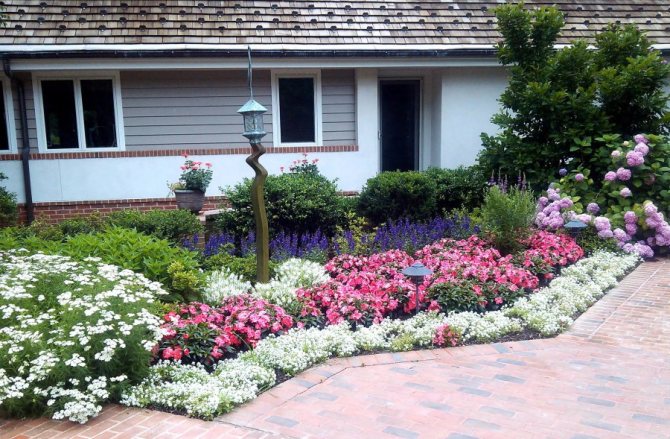

A well-arranged flower garden will adequately decorate the front part of the personal plot
Harmony in an asymmetric balance is more difficult to achieve, but asymmetry looks more natural and picturesque.
The proportionality of forms. Flowerbeds, borders, artificial decorations, boulders should not prevail over each other and create a crushing impression. A smooth transition from one element to another is important. Moving from larger shapes to smaller ones creates a natural perspective.
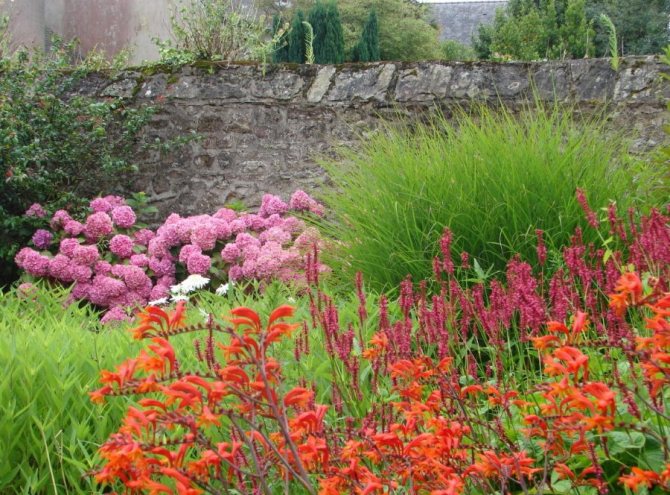

When drawing up a flower garden, the harmony of forms, colors and plant heights is important.
For color combinations, you can choose decorative plants of the same color range or contrasting with each other. How to arrange flower beds near the house - there can be many colors. For example, the borders of the paths are made of white flowers, and the design of the flower garden in front of the house is made of blue and blue. Compositions in which plants of the same color - red or purple - are selected look stylish. White flowers easily set off any contrast. The main thing is not to plant different plants of different colors and sizes all together.
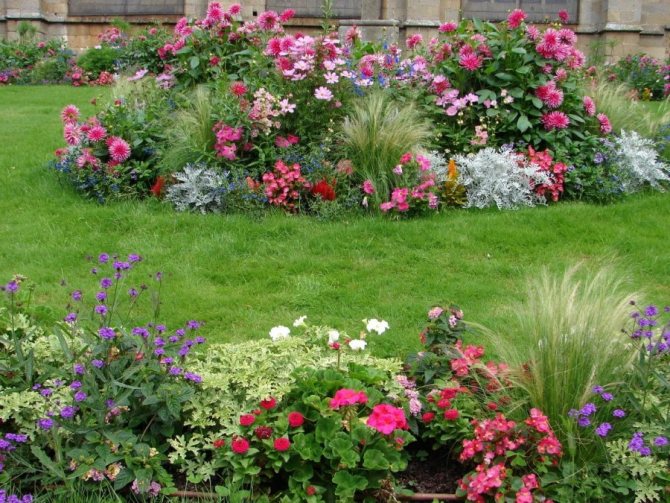

Tall plants attract attention and define the structure of the flower garden
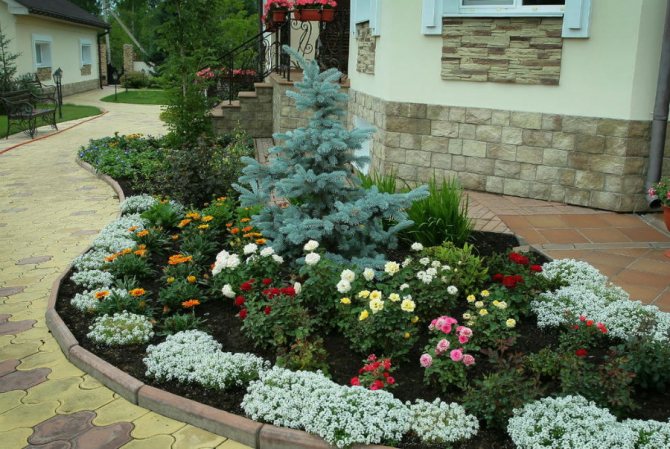

Lower plants fill the space of the flower bed and serve as the background of the composition.
Additional principles of landscape design follow from the basic artistic rules:
- Naturalness.
- Verticality.
- Combination of plants
Naturalness. One of the principles of landscape design is enjoying nature. Therefore, to achieve naturalness, you should not get carried away with artificial elements - fences, statues, as well as straight lines and strict geometric patterns. It is better to frame the figures from a grass or flower border, mark the borders of the elements with natural stones or boulders.
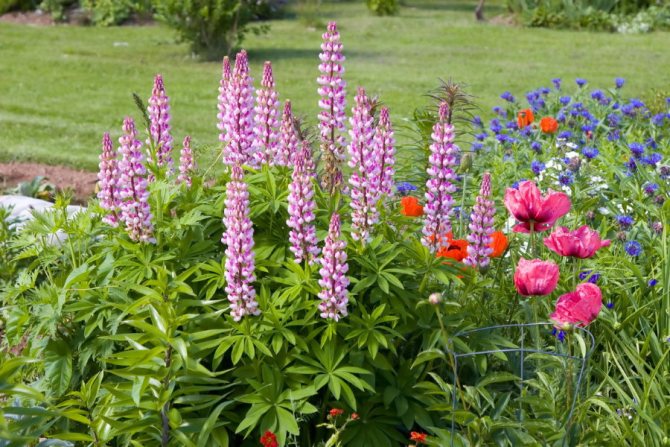

Naturalness involves the use of unpretentious herbaceous plants - lupins, peonies, phlox or daylilies
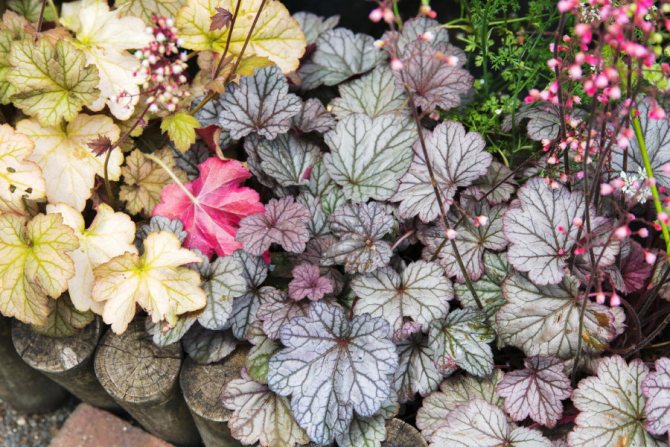

As a living border for a flower bed, it is easiest to use a geyhera, tenacious or arabis
Verticality. New trend in the design of territories. It assumes the development of ensembles not only in the horizontal but also in the vertical plane. This can be the design of a flower garden in front of the house with vertical plants or in the style of an alpine slide. The creation of hills and elevations increases the area and provides additional opportunities for planting plants.
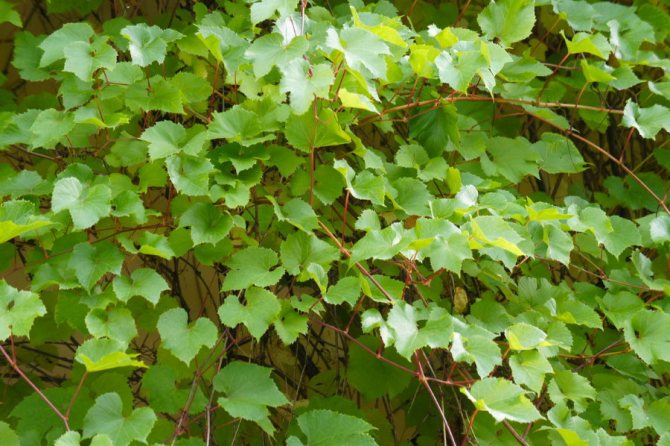

For vertical gardening of the site located on the east or west side of the house, Amur grapes are excellent - a powerful liana that quickly grows up to 8 meters long
The combination of plants implies not only beauty, but their biological harmony. It is important that the plants are combined according to their natural requirements: for light, watering, soil acidity. Before you break up a flower garden on a site, you need to find out what space the plants occupy in adulthood.
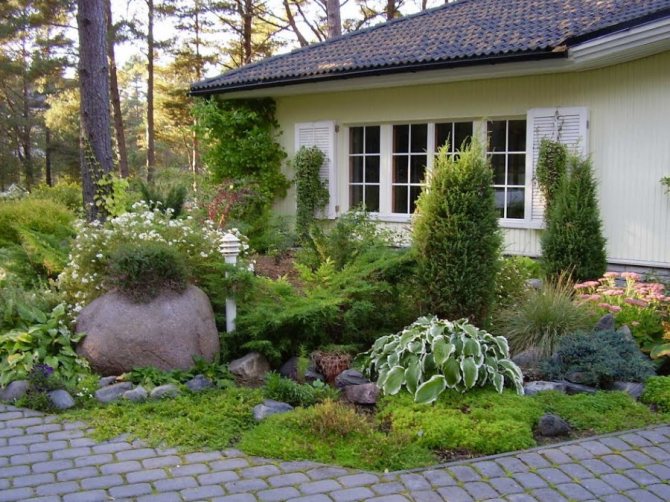

A flowerbed on the north side of the house is decorated with the help of shade-tolerant plants - juniper, western thuja, microbiota, badan and hosts
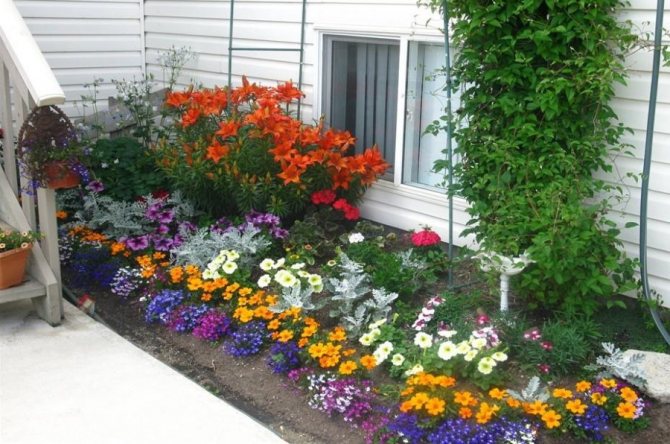

A wide variety of light-loving shrubs and flowers are suitable for a flower bed on the south side of the house.
How to choose a color scheme
Only knowing how to combine colors correctly, you can answer the question: "how to make a beautiful flower bed from perennials." Flowers of contrasting colors look good in flower beds, but there is also one trick here: on large flower beds, plants should be located in groups, otherwise from afar all colors will merge into one indefinite.
Among the bright red, purple or orange flowers, white must necessarily be located, and ground cover plants with silvery, light green, yellow or reddish leaves can be a shading background.
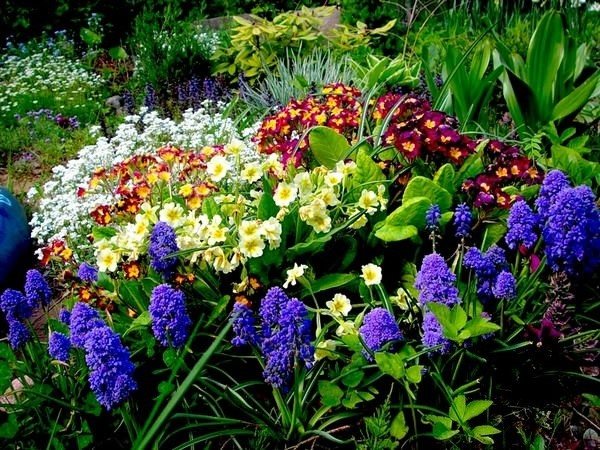

An interesting solution for decorating a flower bed of perennials can be to create a variation from flowers of the same color, but of different types and shades. You can also plant the same plants, but of different heights and different sizes of flowers.
Types of perennial plants for a small garden
Among the most acceptable perennials for planting in small flower beds are:
- aconite. The plant is popularly known as a fighter. Blooms from July to August;
- geranium Endress. An unpretentious plant that tolerates the absence of moisture well. Flowering time June-August;
- crimson gravilat. One of the primroses in the flowerbed, the first buds appear in May. It can bloom again in September;
- delphinium. A plant that is widespread in the middle lane. Blooms from June to July, while in the case of pruning at a short distance from the ground, it can re-produce color;
- the dicenter. Also a popular perennial that blooms from April to May;
- doronicum plantain. A plant ideal for damp and shady places. Also applies to primroses;
- crowded bell. A flower that also grows well in the shade. The color appears in June;
- meconopsis. A plant that requires a minimum of maintenance, which consists in removing wilting buds. Blooms from May to June;
- hellebore. A flower that thrives best in fertile soil and shade;
- musky mallow. A perennial that is not susceptible to growing conditions and feels good even in the shade. Blooms from early summer to September;
- sedum. Plant of the succulent family, related to ground cover. The flowering period is from July to September;
- function. An ornamental leafy plant that can be used in a flower bed as a green mass creation;
- sage. A plant known to many, capable of regaining color when pruned. Blooms from June to late August
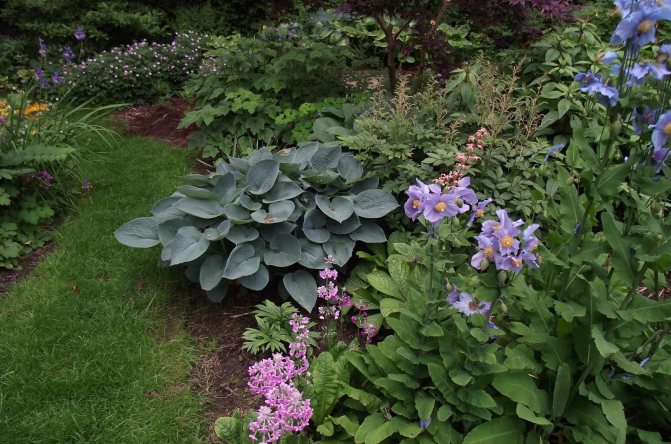

Shady flowerbed border with meconopsis, primrose, hosts.
The selection of a plant in the space of one flower bed in accordance with the flowering time will allow you to get a flower garden that will delight you with a riot of colors throughout the summer season.
Perennial flower bed care
Perennials do not require as much effort from gardeners as their annual counterparts, but nevertheless, you cannot do without proper care. The most essential elements of care are watering and feeding. The frequency and abundance of watering depends on the region in which this flower garden grows. If in the Arkhangelsk region perennials can successfully grow without irrigation at all, then, say, in Rostov they will simply dry up without water. Also, the amount of moisture required depends on the type of plants and their age. Flower beds are watered in the morning or in the evening.
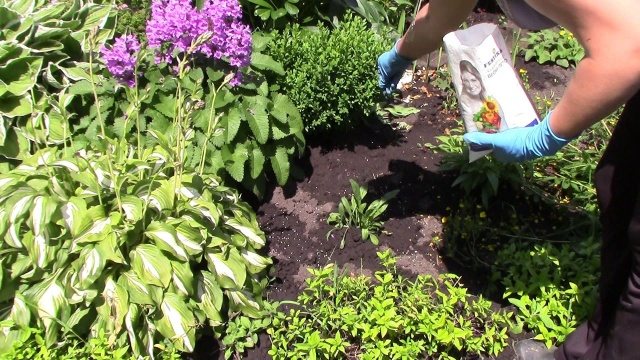

Remember! Young, only planted flowers are especially in need of regular watering. Plants with lush large flowers also "drink" a lot of water.
For normal growth and beautiful flowering, loose soil is needed that does not obstruct air access to the roots, so flower beds need to be loosened and weeds removed from them. Loosening should be done carefully so as not to damage the roots. To avoid frequent weeding and loosening, the use of mulch in the form of crushed bark will help. Skillful use of it can give the flower garden an additional decorative effect.
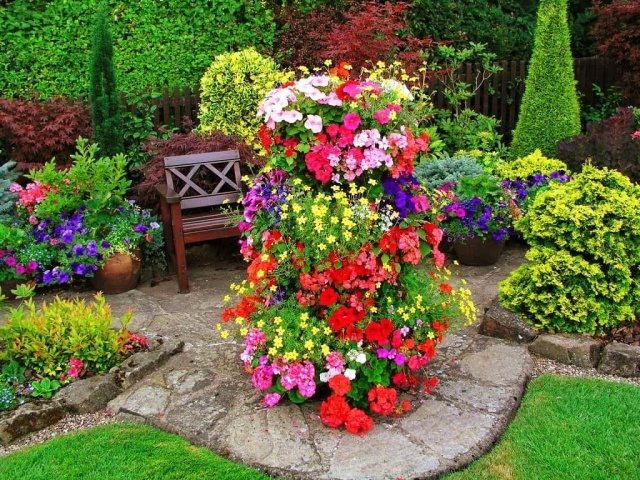

A perennial flower garden will look sloppy if you do not remove faded buds. In some species, pruning helps prolong flowering. There are also types of decorative perennial crops that need a garter.
An important procedure is preparing plants for winter. This includes pruning, covering, or even digging out some species for storage in the basement.
Master Class. Do-it-yourself floating flower bed
A floating flower bed is a kind of vegetation island that moves through a body of water. It looks amazing, and making such a flower bed at home is quite simple. Basically, it is a plastic or wooden base with a sealing net and soil for planting flowers laid on top.You can even use pebbles or a hydrogel instead of soil, but it is important that there are already aquatic inhabitants and other plants in the reservoir (they indicate the presence of nutrients).
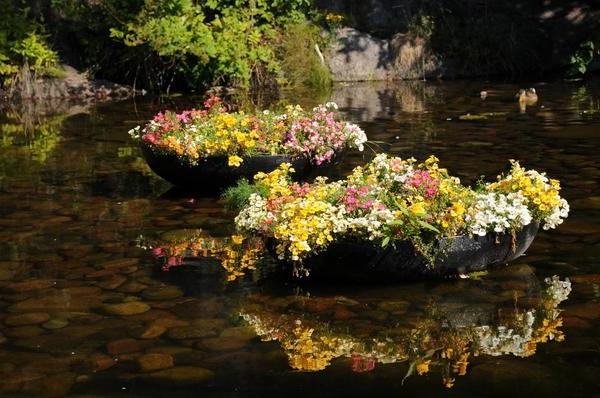

Floating flower bed
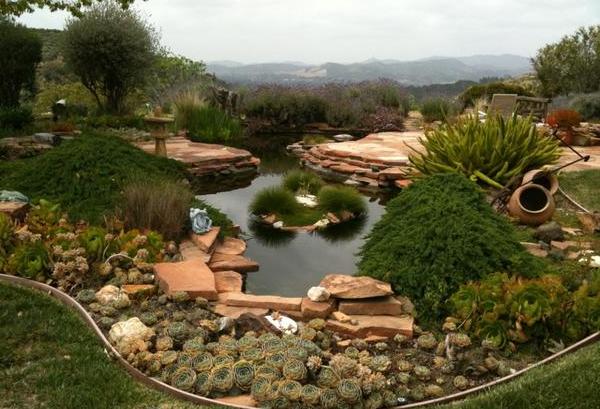

Do-it-yourself floating flower bed
What plants are suitable for this? In principle, any, but be sure to take into account the swimming ability of the structure, because too large plants can easily flood the island. Also note that it is better to give preference to crops that love moisture (sedge, lilies, papyrus, variegated potted flowers or ornamental grass).
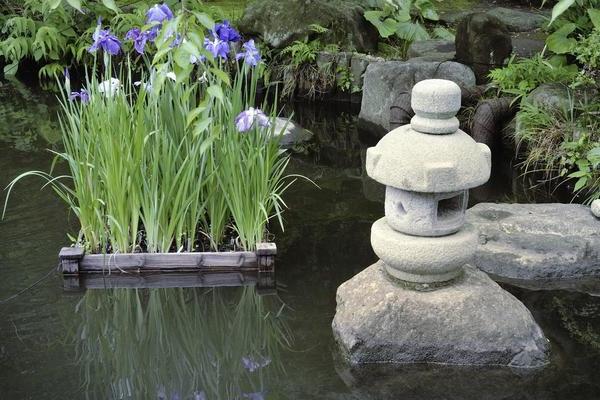

Another example of a floating flower bed
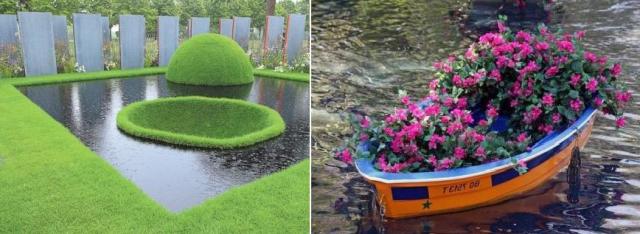

How to decorate a pond with a floating flower bed
A floating flower bed is sold today in many specialized stores, but if you wish, you can make it yourself.
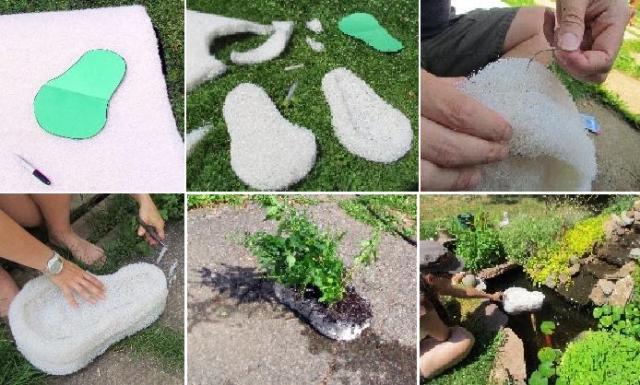

Do-it-yourself flower bed afloat
First, decide what material you will use in the manufacture of the island. Determine the dimensions yourself, as well as the immersion depth (preferably somewhere 7 cm from the bottom). Please note that the soil should not be eroded with water. Use gravel to adjust the dive depth.
- A ready-made pallet (or, alternatively, a mesh pot) can be bought at a store.
- Also, the container can be made from boards (you get a small box with holes) treated with impregnation to protect it from moisture. Such a box must be covered with spunbond or geotextile, and then covered with a drainage layer and soil.
- The third option is to use plastic bottles. They must be cut off, holes made in the base, and then covered with the same geotextile.
It is quite obvious that a container filled with soil will not float by itself - this requires:
- cut out rectangular frames from packaging foam (this remains after the purchase of household appliances) that will hold the island on the surface (they are attached to the top of the flower bed, and not to the base);
- foam the perimeter of the flower bed and its upper part with polyurethane foam;
- make a pontoon from plastic bottles along the edges of the island;
- use an inflated car camera.
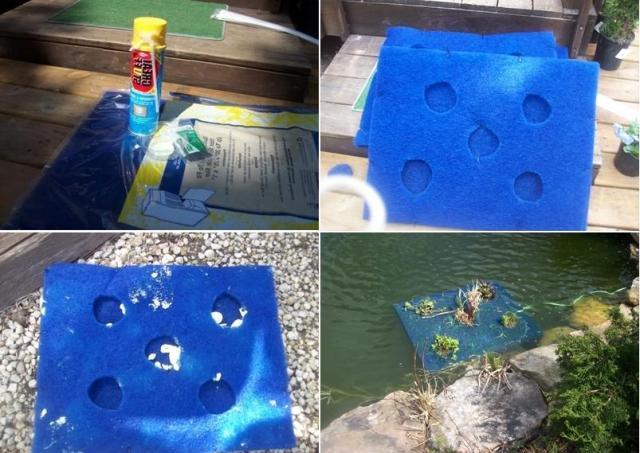

Making a floating flower bed
What about floating flower pots?
They can also be lowered into the water, but the reservoir must be small and necessarily without aquatic inhabitants. For example, you can cut out a foam base for flower pots, like the image below, to be water-stable. However, these floating pots will need to be watered regularly.
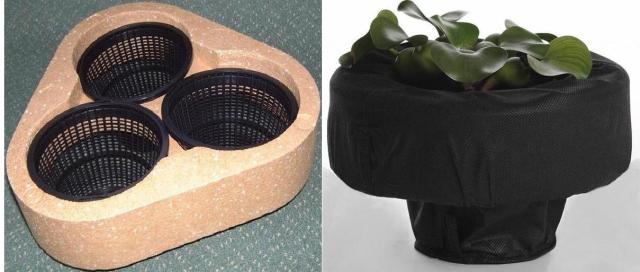

Floating flower pots
How to decorate a floating structure?
- You can mask the unattractive edges of the island with earth, moss or branches.
- Even on such a flower bed, you can install LEDs, the operation of which is controlled by a remote control.
- Finally, you can put there figurines of animals or birds (for example, a ceramic stork).
Note! Before starting a floating flower bed, it must be tested without fail! If it is unstable, then it should be improved. Also keep in mind that the flowers will grow, which will change the balance of the island.
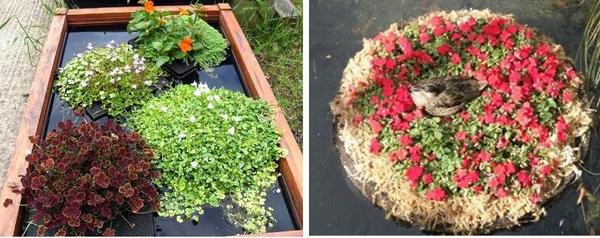

How to decorate a floating flower bed
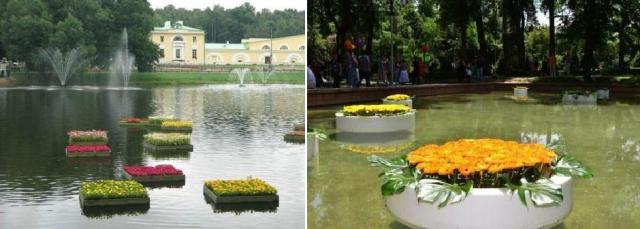

Photo of beautiful flower beds on the water
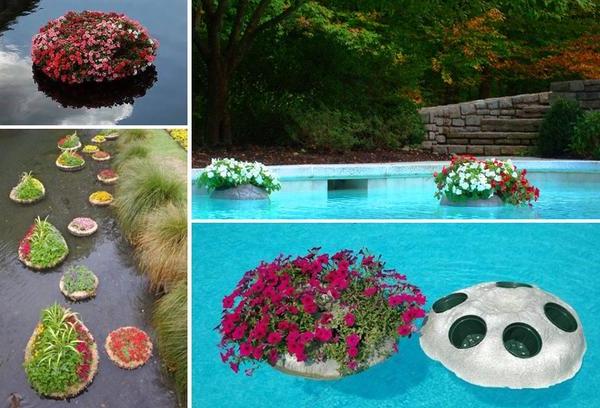

A few more options for floating flower beds


Also, the floating structure can not be lowered freely into the water, but fixed in a certain place, that is, anchored with a heavy stone or cable
Other options for perennial beds
In conclusion, we offer gardeners original perennial flower beds and their planting schemes.
Examples of perennial flower beds, planting schemes:
- A wonderful flower bed with a perennial planting scheme.


- An example of a perennial flower bed layout.
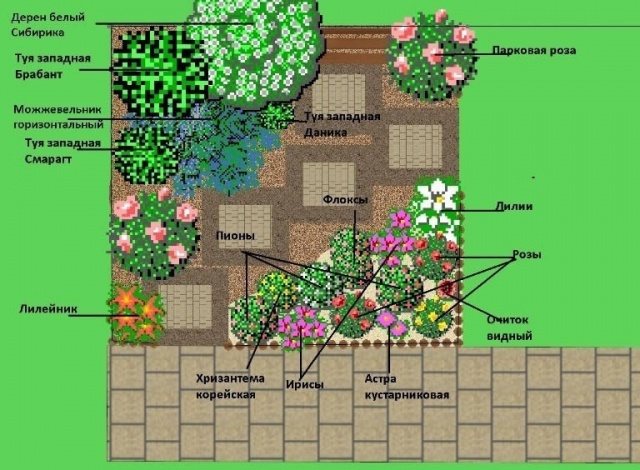

- How to form a beautiful and original flower bed of perennials, which plants to choose for this form, this scheme of planting a constantly blooming flower bed of perennials will help to understand.


- Another flower bed with a perennial planting scheme.
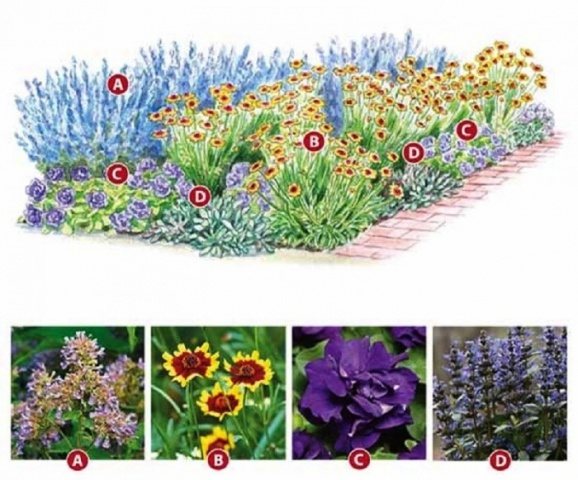

- A stream of flowers.How to form an unusual flower bed from perennial flower species? If you try hard, you can create a shape that mimics a mountain stream. First, a bed of pebbles and stones of different sizes is laid out, undersized blue-blue flowers are planted between the stones. The "reed" planted along the edge will help to enhance the effect of the stream.
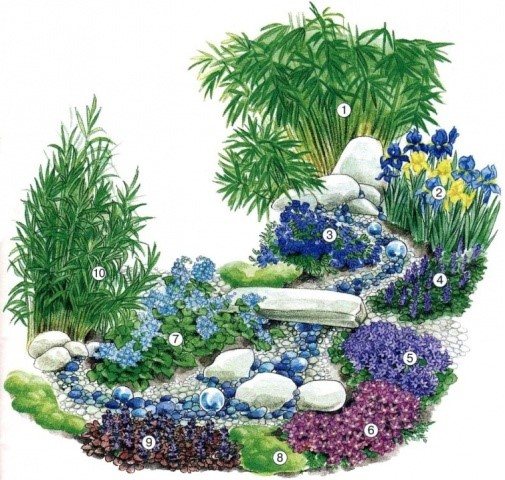

Decoding of planted plants: 1 - bamboo or ostrich; 2 - bearded irises; 3 - lobelia; 4 - tenacious; 5 - Poskharsky's bell; 6 - hybrid obriety; 7 - any blue flower; 8 - bryozoan; 9 - red creeping tenacious.
A round flower bed of perennials will be a great decoration for any garden plot.


The above planting diagram will tell you how to form such a flower bed.
CHOICE OF COLORS
There are a huge variety of perennial flowers. The choice of specific representatives for their composition is carried out taking into account the weather conditions of the region and the design of the site.
Therefore, in the same flower bed, you need to plant flowers that need similar care. Before planting, you need to learn how to properly care for plants. You can choose perennials for your flower garden according to the description and photo.
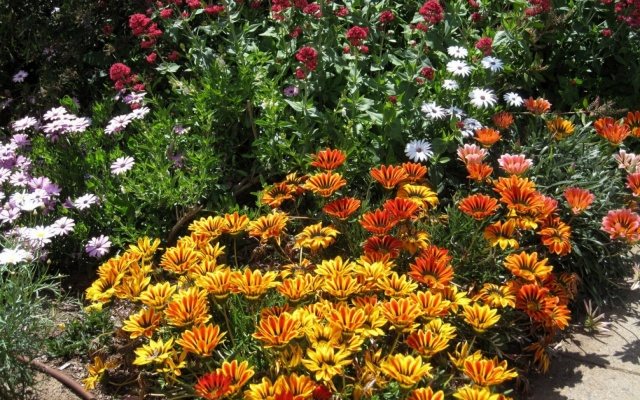

UNUSUABLE PLANTS
To decorate flower beds with perennials, unpretentious plants are most often chosen. This includes flowers that do not require special conditions. They are resistant to frost, drought, high humidity, diseases and pests. Therefore, such plants are able to grow in one place for several years.
Advice! To care for unpretentious flowers, it is enough to periodically water and remove dry leaves and stems in the spring.
A wide group of plants belongs to the unpretentious ones:
- aconite;
- gentian;
- goldenrod;
- physostegia;
- helenium.
MODERATE EFFICIENT FLOWERS
Plants in this category do not need daily care, however, they are demanding on external conditions. It is recommended to replant them every three years in order to prolong their flowering period.
The following colors need some care:
- aquilegia;
- arabis;
- cornflower;
- cloves;
- iris;
- clematis;
- phlox;
- sage.
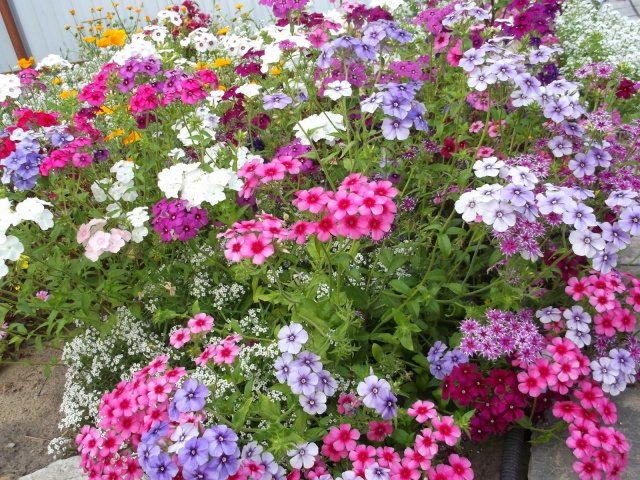

DIFFICULT FLOWERS TO CARE
Certain perennials require complex care, certain soil quality and external factors. They are susceptible to disease, cold, and pests.
Difficulties arise when planting any bulbous plants, as well as the following flowers:
- lilies;
- roses;
- gladioli;
- dahlias;
- begonia;
- chrysanthemum.
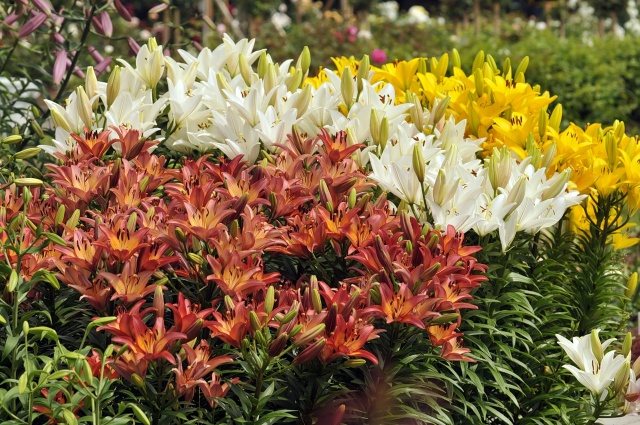

Categories of perennials
All flowering plants from which compositions are created in the landscape are divided into 3 categories: undersized, medium-sized and tall. Let's take a look at each category separately.
Undersized
The first category includes flowers, the growth of which does not exceed 30 cm. They are most often used to create colored carpets. Low-growing flowering perennials include:
- phlox;
- dwarf asters;
- aquilegia;
- obriety;
- gentian;
- Carpathian bells;
- soapworms.
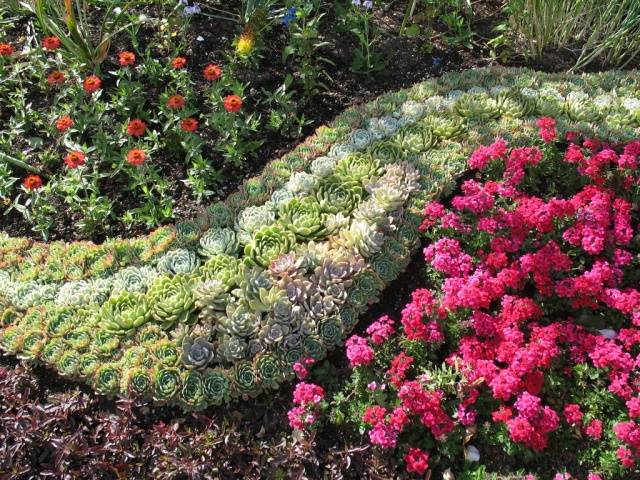

When planting low-growing perennials, it is important to follow some rules:
- Low-growing flowers are best planted on the sunny side. If you ignore this moment, then you should not expect lush flowering.
- For plants to bloom well, they need to be fed with flower fertilizers, while nitrogen fertilization should be minimized. The fact is that the latter contribute to an increase in green mass, not flowering.
- To make a flower bed with undersized flowers look attractive, plants need to be planted close to each other.
- Low-growing representatives of the flora require careful care and timely weeding. And the point here is not only in the aesthetic appeal of the flower bed, but also in the fact that weeds are destructive for undersized perennial flowers.
Medium-sized
The category of medium-sized flowers includes flowers whose growth reaches 30–80 cm. With their help, you can arrange a tiered flower bed or a mono-composition. Among the medium-sized perennials are the following:
- peonies;
- the radio is pink;
- day-lily;
- roses;
- yarrow.
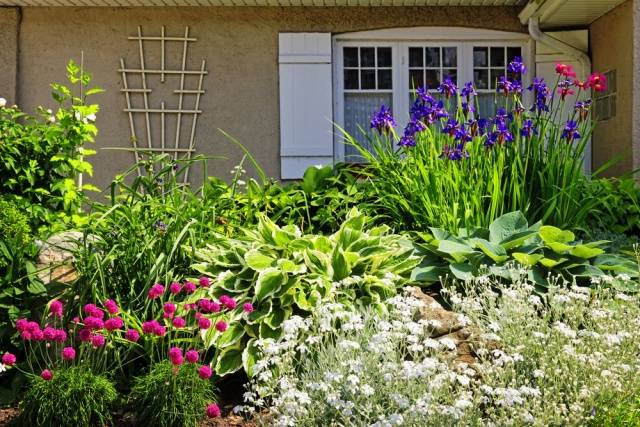

When planting medium-sized plants, you need to leave some distance between them, since they grow more than their undersized counterparts.
Tall
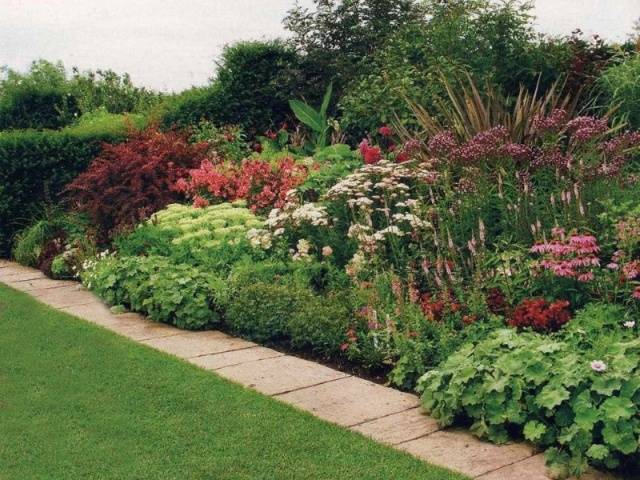

All flowers with a height of more than 80 cm are called tall representatives of the flora or giants. When decorating an island flower bed, you cannot do without tall perennials. This category includes the following flowers:
- basilis;
- mallow;
- winding sunflowers;
- slopes;
- stock-roses.
How to create a continuous flowering flower bed: an all-season flower garden in diagrams and examples
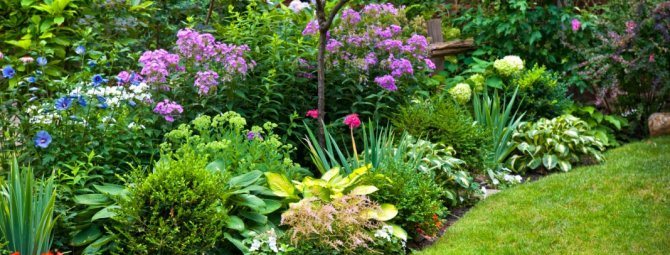

Floral arrangements that delight the eye with gorgeous flowering throughout the season are a dream that can be easily realized on your site, having correctly selected plants. A flower bed of continuous flowering is an excellent option for creating a flower masterpiece that does not fade for a single moment, from the contemplation of which you get aesthetic pleasure at any time of the year. The secret of creating such a flower bed is quite simple: in order to achieve endless beauty, it is enough to pick up plants with different flowering periods and complement the composition with abundantly flowering annuals, as well as specimens with decorative foliage.
The most popular plants for flower arrangements
Spring tenderness
The flower bed gradually comes to life and instead of primroses, miniature primroses, daisies, fluffy pale purple sleep-grass pompons and amazingly beautiful pansies are painted in variegated colors.
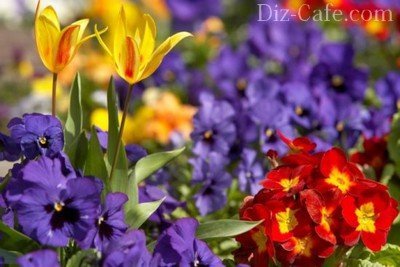

Awakening from the first rays of spring, delicate primroses pleasing to the eye bloom: blue-blue streams, yellow and purple crocuses, forget-me-not, lungwort, daffodils and early-flowering tulips
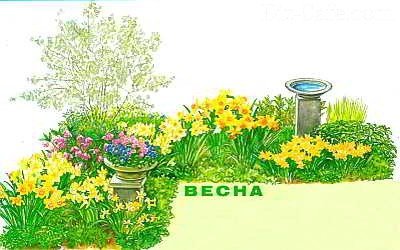

In May, irises, lupins, aquilegia, peonies, forsythia manifest themselves in all their glory, competing in beauty with luxurious terry daffodils and chic tulips
In the second half of May, hyacinth inflorescences emit a delicate aroma. At the same time, an incredibly beautiful shrub grouse, imperial or royal crown, blooms.
During this period, when the plants in the flowerbed have already awakened, the empty areas between perennials can be filled with seedlings or sowing seeds of annuals so that they please with their flowering in the second half of summer.
You can learn how to choose the best annual flowers for subsequent planting on a flower bed from the material: https://enn.imadeself.com/ozelenenie/krasivye-odnoletniki-dlya-klumby.html
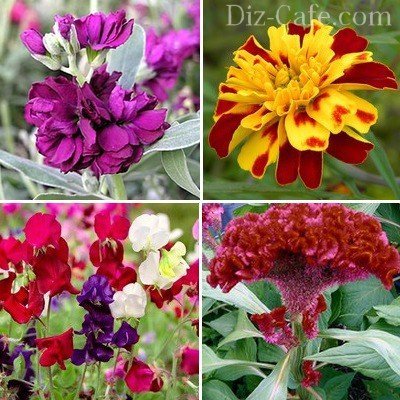

An elegant decoration of a flower garden can be: marigolds, sweet peas, amaranth, Chinese aster, levkoev
Summer beauty
From the first days of June, a real “flower carousel” has been unfolding. At the same time, delphiniums, roses, zinnias, liatris, hydrangea, alissum, escholzia, calendula bloom ... Following them, the baton is picked up by: cornflowers, lilies, daylilies, nivyanik, erigeron, astilba.
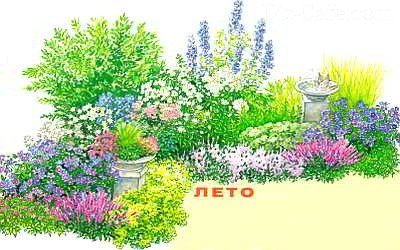

Tall candles of pyramidal inflorescences of blue delphiniums, the soloists of the flower garden, give the flower bed a special solemnity and brilliance. Astrantia and Aquilegia complement the picturesque picture
Among the popular perennials blooming all summer long, one can also distinguish: lilies and daylilies, double monarda, rudbeckia, lamb, echinacea purpurea.
Autumn riot of color
When the summer heat subsides, dahlias, phloxes, cannes, chrysanthemums, lobelia, and crocus are taking over the flowering baton. Opening such different and surprisingly beautiful flowers to the sun's rays, each autumn flowering plant pleases the eye and at the same time gives birth to some sadness in the heart - soon you will have to say goodbye to this beauty until the first rays of spring.
When creating compositions, you can use the feature of some plants to please with repeated flowering. For example, re-painting a flower garden in variegated colors will help: ageratum, begonia, remontant roses and carnations.
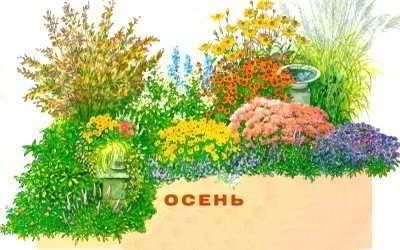

In the autumn months, coreopsis, sedum, cushion aster and helenium give the flower garden bright colors.Sage and delphinium are transformed again, delighting with flowering, although not as lush as in summer
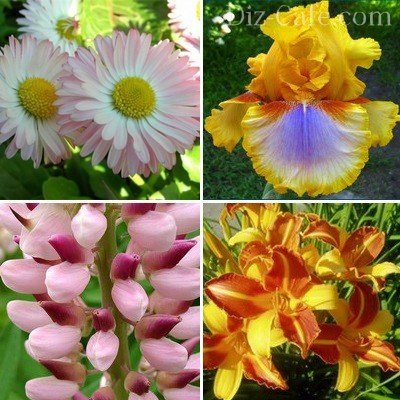

After removing wilted flower stalks, you can enjoy re-flowering in such plants as: daisies, daylilies, lupins, bells, irises
In this variety of the floral world, there are plants that are able to delight others with gorgeous flowering throughout the season. The inflorescences of decorative onions, blooming at the end of May, "freeze" with outlandish balls, giving the flower garden originality and multi-tiered. Golden balls of craspedia do not lose their attractiveness until the very frost. From early spring to late autumn, the decorative yarrow acts as an adornment of the flower garden.
Option 2. The flower garden is in the shade and surrounded by paths
In the shade, it is usually necessary to plant plants that do not thrive in direct sunlight or prefer moist soil. Shade-tolerant hosta, badan, geranium, thuja, irises, horizontal juniper correspond to these conditions.
Moreover, it is necessary to correctly arrange the plants in height. Knowing that hosts, incense and geraniums grow up to 30-40 cm, they are planted in the foreground. Closer to the middle of the flower garden, taller plants are placed: thymus spherical, larch on a trunk, irises, daylilies, aquilegia.
It should be remembered that shade-loving plants please, as a rule, not with flowering, but with their delicate and juicy foliage or needles. Therefore, shady flower beds are more monochromatic.

